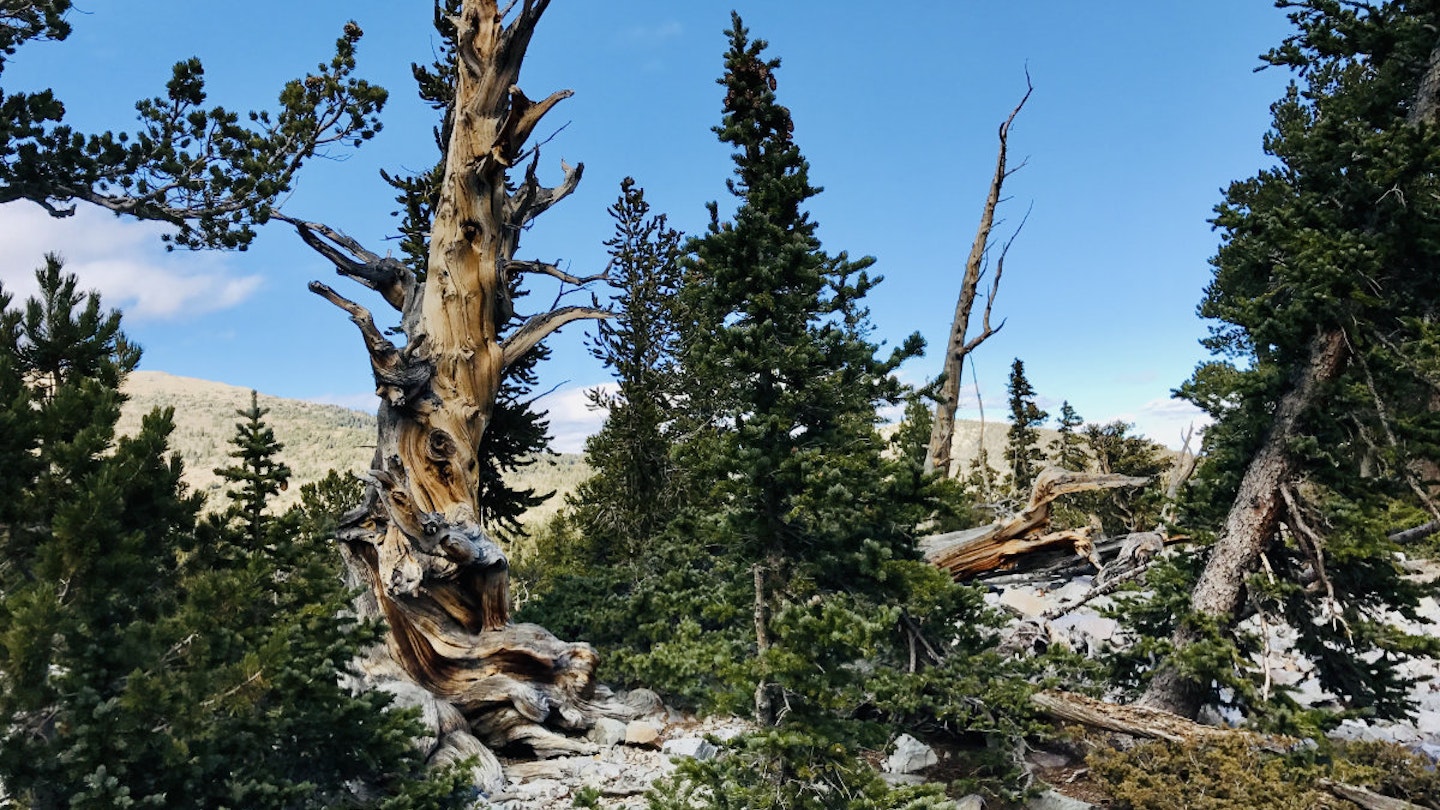Discover the Great Basin National Park
At nearly five millennia old, the bristlecone pines in Nevada‘s Great Basin National Park are among the oldest living organisms on the planet. While they may not reach the heights of record-setting redwoods and sequoias in nearby California, ancient bristlecones have the remarkable ability to live over a thousand years longer. Consequently, hiking among them is a surreal and awe-inspiring experience.
To reach these magnificent trees, you must journey across the “Loneliest Road in America,” also known as US Route 50, which stretches across the desert basin. This highway begins just outside of Reno in western Nevada and extends halfway through Utah, ultimately connecting with several interstate highways. The park itself is situated at the border of these two states. Here’s what you need to know.
Welcome to Great Basin National Park
Upon arriving at Great Basin National Park, you will be welcomed by a significant sign and the stunning backdrop of Wheeler Peak. Established first as a National Monument in 1922 and then designated a National Park in 1986, Great Basin remains open to visitors free of charge. With no gate agent in sight, visitors can head straight toward an unforgettable hiking experience, exploring the renowned Bristlecone Pine Glacier Trail to experience the ancient trees up close.

Hiking Through History
The Bristlecone Pine Glacier Trail is rocky and steep, featuring an incline of approximately 1000ft over a distance of just over 2 miles. The total hike spans 4.5 miles out and back, starting at an elevation of just under 10,000ft. Visiting the grove of bristlecones is absolutely worthwhile and provides a unique opportunity to observe these ancient trees firsthand. Initially, I was drawn to the novelty of encountering one of the planet’s oldest living organisms; however, I was deeply moved by their timeless presence. It’s akin to the feeling of walking through ancient Rome, which dates back over 2700 years. Yet, the trees here are even older, a testament to the natural world.
The oldest recorded tree, a bristlecone named Prometheus, was nearly 4900 years old when it died within the park in the 1960s. Nevertheless, many of the trees in this extraordinary grove continue to thrive, with ages ranging from 3000 to 4000 years. Some of the once-mighty trees have succumbed to time, yet their resilient trunks remain visible along the trail.
One notable remnant, estimated to have been born in 1300 BCE and perished in 1700 AD, can still be seen on the trail, lying beside a metal placard that reads: “This great reluctance to die is so common among bristlecone pines; they may cling to life for centuries after reaching old age.”
As I strolled past these trees and absorbed their ages, I felt humbled to witness something that had likely been alive during the construction of the Egyptian pyramids. Inserting any favorite historical references—deities, ancient civilizations, or the aforementioned Rome—many of these trees have lived long before us and still persist today. It is a truly mind-boggling thought.

Why Do Bristlecones Live So Long?
The Great Basin, much like all exceptional deserts, serves as a window into both the past and the present. “If you can thrive out here, you’ll live a long time,” one local remarked when I inquired about the reasons behind Nevada’s longevity.
This statement partially explains the remarkable lifespan of bristlecone pines. In a landscape characterized by its loneliness and sparse vegetation, these trees have managed to endure. They possess a rough exterior yet a softer interior, embodying the spirit of the Wild West. Moreover, the slow passage of time has weathered and seasoned them. To wander among these living organisms that are over 4000 years old is an extraordinary experience.
However, age alone does not define their existence. Truthfully, bristlecones are not the most visually appealing plants, although a skilled photographer can capture their beauty. They undergo a unique process known as molting, where older trunks and branches die off, replaced by new growth from within. This adaptation allows their outer layers to form a protective barrier against harsh environmental conditions, contributing to their impressive lifespan.
In essence, bristlecones are weathered survivors, much like the stark terrain surrounding them. They embody the spirit of “Battle Born,” reflecting the resilience of the state they inhabit. In simpler terms, they are an inspiration, an enduring reminder that time can often feel insignificant—unless one is present to fully appreciate it.

Getting to Great Basin National Park
While traveling through Nevada, you will cross the Great Basin itself, a breathtakingly desolate area with minimal signs of life and hardly any advertisements. As you approach the national park, you will be greeted by wide-open spaces, low-lying mountains surrounding you, and expanses of sagebrush lining the sun-kissed highway.
Before embarking on this adventure, it is crucial to plan your fuel stops precisely. A warning sign that reads “No services for 170 miles” may induce anxiety, yet the journey is not as lonely as it may seem, with occasional vehicles appearing along the way to enhance the sense of adventure.





